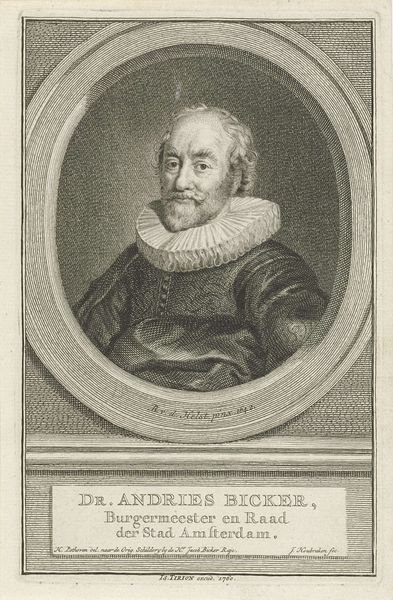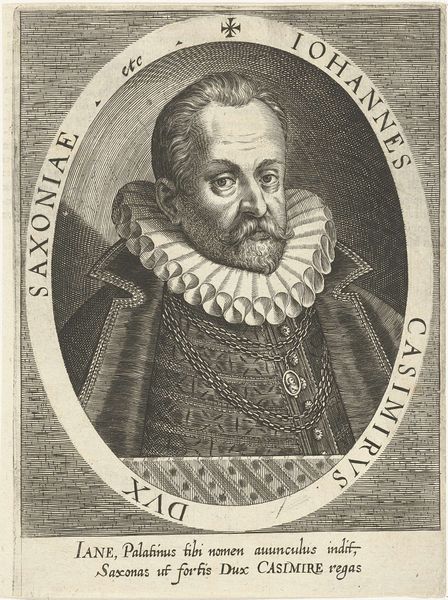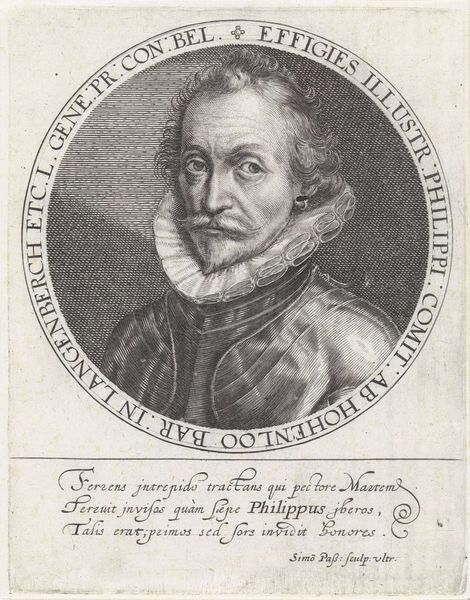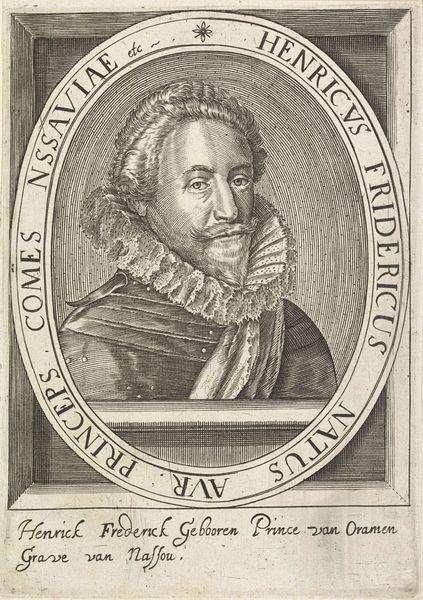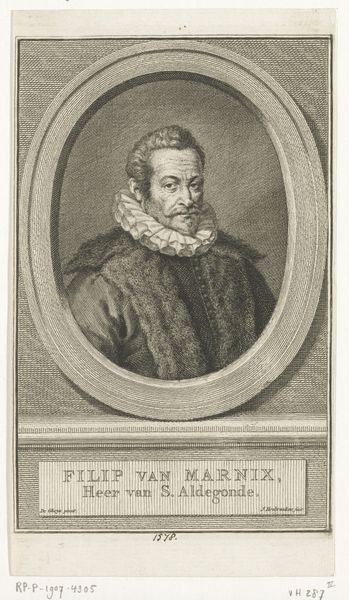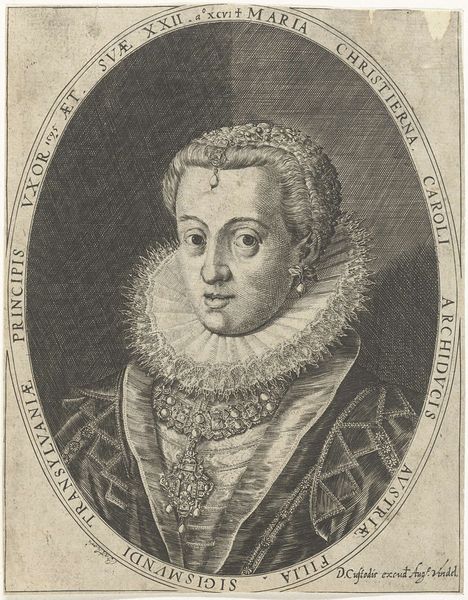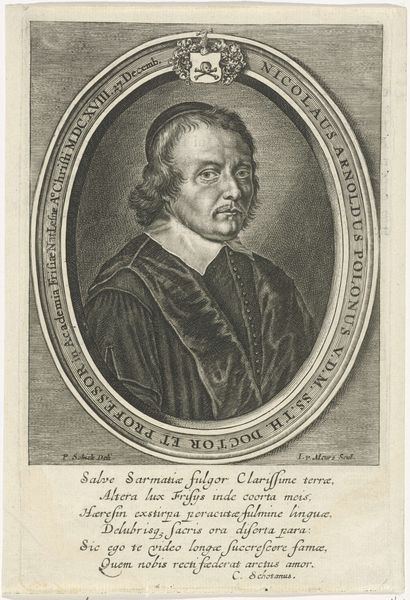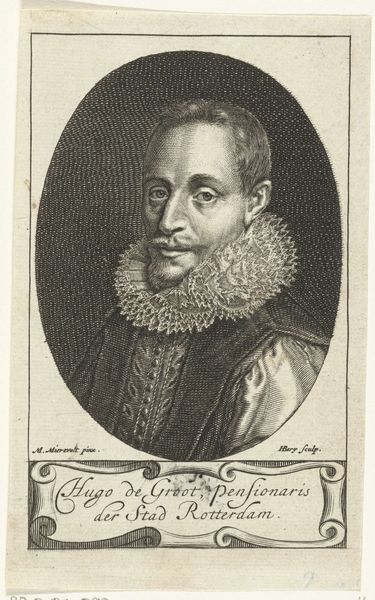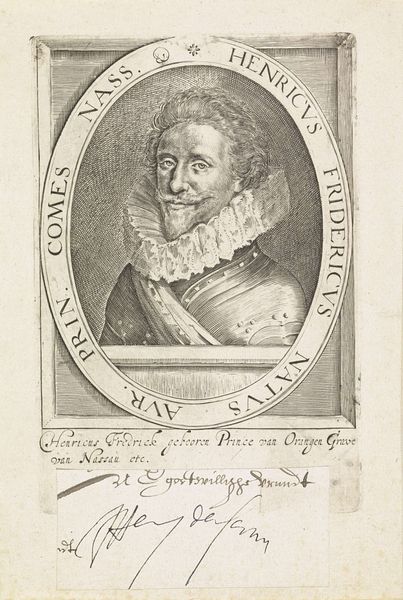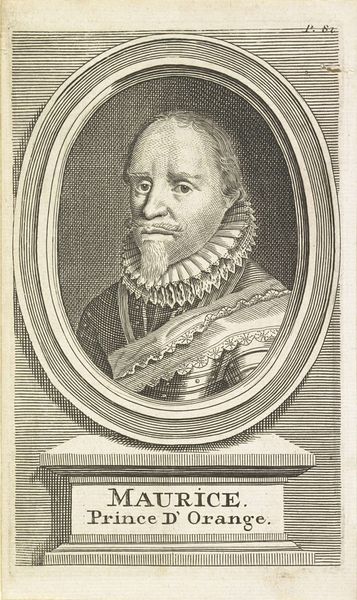
print, engraving
#
portrait
# print
#
old engraving style
#
caricature
#
11_renaissance
#
northern-renaissance
#
engraving
#
columned text
Dimensions: height 167 mm, width 127 mm
Copyright: Rijks Museum: Open Domain
Editor: Here we have Dominicus Custos' "Portret van Frans Hercules van Anjou," made sometime between 1579 and 1615. It's an engraving, and there's something about the way the face is rendered that feels almost like a caricature, despite the formal presentation. How do you read the production and context of this portrait? Curator: It is essential to analyze the materiality of this print and how that contributes to its meaning. This engraving's production depended on specialized labor, from the engraver themselves, Dominicus Custos, to the suppliers of the metal plate and the printing press operators. Consider, too, the intended consumer of such prints. Editor: So, the choice of engraving is important beyond just being a readily available medium? Curator: Exactly. Engravings like these democratized portraiture. Compared to a painted portrait reserved for the wealthy elite, a print could circulate more widely. We must then ask, how does the relative affordability and reproducibility impact our understanding of its social function, compared, say, with painted portraits of the time? What labor was involved? And who was purchasing these engravings? Editor: I see your point. So the lines, which seem almost comical at first glance, were a deliberate choice driven by production and consumption, as it facilitated lower production cost and thus distribution! It prompts me to consider portraits that I may not have engaged with, through similar socio-economic and productive conditions! Curator: Precisely! And seeing this work, as part of an expanding early print marketplace reframes our appreciation of the artist's process.
Comments
No comments
Be the first to comment and join the conversation on the ultimate creative platform.
